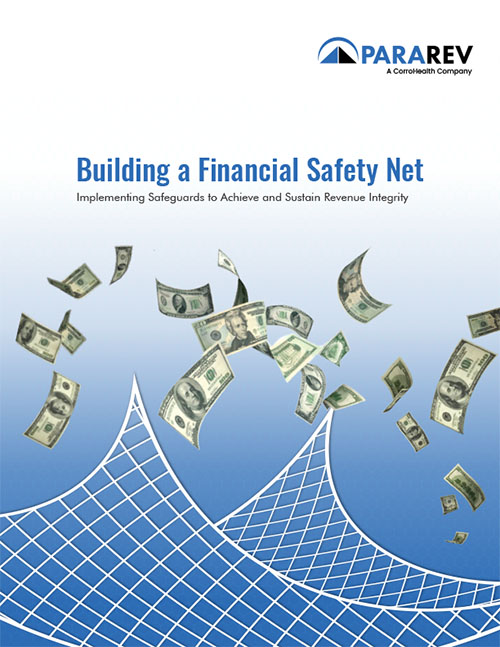Exploring Alternatives to Borrowing Money Instantly
There are various reasons one might seek to acquire funds quickly, such as unexpected bills, car repairs, or medical expenses. While borrowing money instantly may seem like the most convenient solution, it is crucial to consider alternatives before committing to a loan. These options may not only save you money but also help you establish good financial habits for the future.
One alternative is to tap into your savings, assuming you have an emergency fund set aside. This approach allows you to access money without accruing interest or fees. If you don’t have savings, consider cutting back on discretionary spending or selling items you no longer need. You might also explore the possibility of negotiating payment plans with creditors to provide additional time to gather funds.
Another option is to seek help from friends, family members, or local community organizations. These sources may be more willing to offer flexible repayment terms and lower interest rates than traditional lenders. However, it is essential to maintain open communication, set clear terms, and honor any agreements to preserve relationships and trust.
Lastly, consider short-term employment opportunities or side hustles to generate extra income quickly. Platforms such as Upwork, Fiverr, or TaskRabbit can help you find freelance work or odd jobs that suit your skills and schedule. Alternatively, you might explore the gig economy by driving for a rideshare company, delivering food, or pet sitting.
Credit Card Cash Advances: Pros and Cons
A credit card cash advance is a short-term borrowing option that allows you to withdraw cash using your credit card at an ATM or bank. While this method can provide quick access to funds, it is crucial to weigh the benefits and drawbacks before proceeding.
One advantage of credit card cash advances is their convenience. They can be an accessible source of funds when other options are unavailable. Additionally, credit card cash advances may not require a credit check, making them an option for those with less-than-perfect credit histories.
However, credit card cash advances come with several significant drawbacks. First, they typically have higher interest rates than regular credit card purchases, meaning you’ll pay more in finance charges over time. Additionally, cash advances often incur immediate fees, typically a percentage of the withdrawn amount or a flat rate, whichever is greater.
Another disadvantage is that credit card cash advances do not have a grace period. Interest begins accruing the moment you withdraw the funds, unlike regular purchases, which often have a 21- to 25-day grace period before interest charges apply.
To access a credit card cash advance, locate an ATM that accepts your credit card issuer, insert your card, and follow the prompts to withdraw cash. Be prepared to pay the associated fees and interest, and consider this option only when other alternatives are unavailable or insufficient.
Payday Alternative Loans: A Viable Option
Payday alternative loans (PALs) are a regulated and potentially less costly alternative to traditional payday loans. Offered by federal credit unions, PALs provide small, short-term loans to help cover unexpected expenses or bills.
To qualify for a PAL, you must be a member of a federal credit union for at least one month. These loans typically range from $200 to $1,000, with a maximum term of six months. The application process is straightforward, often requiring proof of income, identification, and a checking account.
Unlike payday loans, PALs have reasonable interest rates and fees. The maximum annual percentage rate (APR) for a PAL is 28%, and the application fee cannot exceed $20. This structure ensures that borrowers can repay their loans without falling into a cycle of debt.
To apply for a PAL, follow these steps:
- Find a federal credit union that offers PALs.
- Ensure you meet the membership requirements.
- Gather necessary documents, such as proof of income and identification.
- Submit your application, either online or in-person.
- Wait for approval, which typically takes one to three business days.
Payday alternative loans offer a regulated and affordable solution for those in need of quick cash. By choosing a PAL over a traditional payday loan, borrowers can avoid excessive fees and interest rates, ultimately setting themselves up for long-term financial success.
Peer-to-Peer Lending Platforms: Benefits and Risks
Peer-to-peer (P2P) lending platforms connect borrowers directly with investors, cutting out the middleman and offering an alternative to traditional loans. These platforms can be an attractive option for those seeking quick cash, but it is essential to understand the benefits and risks involved.
P2P lending platforms typically offer loans for various purposes, including debt consolidation, home improvement, and personal expenses. The application process is often streamlined, with borrowers required to provide basic personal and financial information. Once approved, borrowers receive loan offers from multiple investors, allowing them to choose the best terms.
One advantage of P2P lending is the potential for lower interest rates compared to traditional loans, especially for those with good credit. Additionally, P2P platforms may approve loans for individuals with lower credit scores, making them a viable option for those who may not qualify for traditional loans.
However, P2P lending also comes with risks. Borrowers may face higher fees than with traditional loans, and there is a risk of default if payments are not made on time. Furthermore, some P2P platforms have been known to engage in predatory lending practices, so it is crucial to research and choose a reputable platform.
To get started with P2P lending, consider these popular platforms:
- LendingClub
- Prosper
- Upstart
Before committing to a P2P loan, ensure you understand the terms, interest rates, and fees. Carefully review the platform’s reputation and investor history, and consider seeking advice from a financial advisor if you are unsure about the process.
Pawn Shops: How They Work and What to Expect
Pawn shops provide a short-term solution for securing a loan by using personal items as collateral. While this option can be convenient for those in need of quick cash, it is essential to understand the process, interest rates, and terms before committing.
To obtain a pawn shop loan, bring a valuable item, such as jewelry, electronics, or tools, to a pawn shop. The pawnbroker will assess the item’s value and make a loan offer based on that assessment. If you accept the offer, you will receive a portion of the item’s value in cash and must repay the loan, plus interest and fees, within a specified period, typically 30 to 90 days.
Pawn shop loans come with several advantages. They are quick and easy to obtain, with no credit check required. If you cannot repay the loan, you can choose to forfeit the item, and there will be no negative impact on your credit score. However, pawn shop loans also have significant drawbacks.
Interest rates for pawn shop loans can be extremely high, often exceeding 200% APR. Additionally, pawn shops may charge additional fees, such as storage and insurance costs. If you fail to repay the loan, you risk losing your collateral, and if you frequently use pawn shops for loans, you may develop a cycle of debt.
Before committing to a pawn shop loan, consider these tips:
- Research local pawn shops to find one with fair interest rates and fees.
- Understand the terms of the loan, including the repayment schedule and any additional costs.
- Ensure you can repay the loan within the specified time frame to avoid losing your collateral.
Pawn shops can be a useful resource for those in need of quick cash, but it is crucial to approach them with caution and a clear understanding of the associated risks and costs.
Friends and Family: Borrowing Money Responsibly
Borrowing money from friends and family can be an attractive option when you need funds quickly. This method often comes with lower interest rates and more flexible repayment terms than traditional loans. However, it is crucial to approach this option with care, maintaining open communication, setting clear terms, and preserving trust.
Before approaching a friend or family member for a loan, consider these steps:
- Evaluate your financial situation: Determine whether you can realistically repay the loan and assess the potential impact on your relationship.
- Prepare a written agreement: Clearly outline the loan amount, interest rate (if applicable), repayment schedule, and consequences of missed payments. This step will help ensure both parties have a clear understanding of the arrangement and prevent misunderstandings.
- Discuss the loan in person: Have an open and honest conversation about your financial needs and the proposed loan terms. Make sure to listen to their concerns and be prepared to answer questions.
- Maintain open communication: Regularly update your lender on your progress and any changes to your repayment plan. This approach will help build trust and demonstrate your commitment to repaying the loan.
While borrowing from friends and family can be a viable solution, it is essential to remember that money can strain relationships. By approaching this option responsibly, you can minimize the potential risks and maintain healthy connections with your loved ones.
Gig Economy and Side Hustles: Making Money Quickly
When you need to acquire funds quickly, participating in the gig economy or pursuing side hustles can be an excellent alternative to borrowing money instantly. These opportunities allow you to generate extra income by leveraging your skills, hobbies, or available resources. Here, we explore various options and provide tips for getting started.
The Gig Economy
The gig economy refers to the growing trend of flexible, on-demand work, often facilitated through digital platforms. By joining the gig economy, you can offer services, such as ridesharing, food delivery, or freelance work, on your schedule.
- Ridesharing: Companies like Uber and Lyft allow you to use your personal vehicle to transport passengers in your spare time.
- Food delivery: Platforms like DoorDash, Uber Eats, and Grubhub enable you to deliver meals from local restaurants to customers’ doors.
- Freelance work: Websites like Upwork, Fiverr, and Freelancer connect you with clients seeking services in areas such as writing, graphic design, programming, and more.
Side Hustles
Side hustles are additional income-generating activities, often complementing your primary job or career. These opportunities can range from selling handmade products to offering consulting services or tutoring.
- Handmade products: Selling crafts, artwork, or other handmade items on platforms like Etsy can be a creative way to earn extra money.
- Consulting: If you have expertise in a particular field, consider offering consulting services to businesses or individuals in need of your guidance.
- Tutoring: Sharing your knowledge in subjects like math, science, or a foreign language can be both rewarding and profitable.
To make the most of your gig economy or side hustle experience, consider these tips:
- Research available platforms and opportunities to find the best fit for your skills and schedule.
- Ensure you understand the terms, fees, and payment structures before committing.
- Maintain a professional demeanor and deliver high-quality work to build a positive reputation and secure repeat business.
By exploring the gig economy and side hustles, you can acquire funds quickly without resorting to loans, ultimately fostering financial resilience and independence.
Establishing a Financial Safety Net: Preparing for the Future
Creating a financial safety net is essential for managing unexpected expenses and avoiding the need to borrow money instantly. By focusing on budgeting, saving, and managing debt, you can build a solid foundation for your financial well-being. Here, we provide practical advice on establishing a financial safety net and securing your financial future.
Budgeting
A well-structured budget is the cornerstone of financial stability. By tracking your income and expenses, you can identify areas for improvement, reduce unnecessary spending, and allocate funds toward savings and debt repayment.
- List all sources of income and expenses.
- Categorize expenses into fixed (e.g., rent, utilities) and variable (e.g., groceries, entertainment) costs.
- Set realistic spending limits for each category and track your progress regularly.
- Adjust your budget as needed to accommodate changes in income or expenses.
Saving
Establishing a savings habit is crucial for building a financial safety net. Aim to save a portion of your income each month, gradually increasing the amount as your financial situation improves.
- Set specific, measurable, achievable, relevant, and time-bound (SMART) savings goals.
- Automate savings transfers to ensure consistency and discipline.
- Explore high-yield savings accounts or certificates of deposit to maximize returns.
Managing Debt
Excessive debt can hinder your ability to save and may lead to borrowing money instantly. To maintain a healthy financial profile, prioritize debt repayment and avoid accumulating high-interest debt.
- List all debts, including balances, interest rates, and minimum payments.
- Focus on paying off high-interest debt first, while maintaining minimum payments on other debts.
- Consider debt consolidation or balance transfer offers to reduce interest expenses.
By prioritizing budgeting, saving, and managing debt, you can establish a robust financial safety net, reducing the need to borrow money instantly and securing your financial future.







